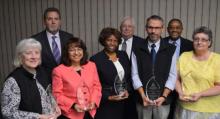 Story by Jerry Woods
Story by Jerry Woods
The WGTS 91.9 staff got a chance to play Santa’s helpers right before Christmas. The staff visited the pediatric ward of the Shady Grove Adventist Medical Center in the suburbs of Washington D.C., to distribute teddy bears. It’s been a staff tradition for the last three years to stuff teddy bears at that party to be delivered to a local hospital.








 race Outlet en Reading, Pennsylvania y Marquis Johns, pastor principal de la iglesia de Filadelfia Norte, serán algunos de los presentadores.
race Outlet en Reading, Pennsylvania y Marquis Johns, pastor principal de la iglesia de Filadelfia Norte, serán algunos de los presentadores. 

